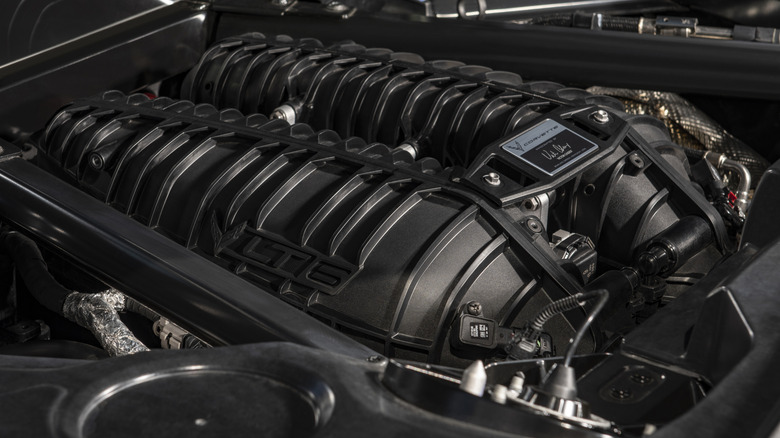The Biggest Differences Between General Motors' LS & LT Engines
One thing the automotive world isn't shy of, is LS-swapped cars. LS engine swaps have become so popular, and it makes sense too, as these V8 engines offer a tried and tested method of developing a whole heap of power for not much cash. Having debuted in 1997 under the hood of Chevy's then-new C5 Corvette, there is an abundance of LS engines out there for enthusiasts to choose from, with secondhand engines available for cheap. However, it's no longer in production use, with GM upgrading to the LT family in more recent years.
The main difference between the LS and LT family of engines is simply evolution. The LT was designed to meet stricter emissions regulations, and with that, it brings a whole host of technologies which did not feature on the LS. For example, direct injection, newer dynamic fuel management systems, and advanced variable valve timing.
In comparison, the LS is a much simpler engine, but it's far from obsolete. The outputs are, of course, another obvious differentiator. While power and torque varies from engine to engine, both the LS and LT families offer a wide number of engine iterations.
Just comparing the basic LS3 and LT1 engines can reveal how much outputs differ. The former delivers 430 horsepower at 5,900 rpm, with 424 lb-ft of torque arriving at 4,600 rpm, whereas the LT1 kicks out 459 horsepower and 462 lb-ft of torque, at 6,000 rpm and 4,600 rpm, respectively.
Technology costs
Another major difference between these two engines is that the advancements made by General Motors mean that LT engines cost considerably more than LS engines. Whereas you can walk into almost any junkyard and find an old truck or SUV with an LS under the hood, the LT engine is a little more specialist.
Advancements such as the all aluminum block, with an exception made for LT engines in heavy-duty applications, in addition to the fact that the LT is still being further developed to this day, leads to rising purchase costs. We recently drove the C8 Corvette Z06, and we can confirm the recently developed LT6 sounds and performs awesomely, thanks to a flat-plane crank design, and howling 8,600 rpm redline.
They aren't just more expensive to buy either, but they can also prove more costly when it comes to installing them too. Whereas a wide variety of cars have been LS-swapped, fewer cars have been LT-swapped. The lack of a belt-driven power steering pump and the complexity of the direct injection system can complicate retrofits into older vehicles. Plus, while the LT's aftermarket is growing fast, it hasn't caught up to the LS just yet, which can lead to complications when sourcing compatible parts, depending on the specific application.
Deciding which is best for you
Despite the generational gap, both the LS and LT engine families bring some serious strengths to the table. The LS remains the king of cost-effective performance, whether you're hunting through a junkyard for some cheap muscle, or building a stroker motor from scratch, the LS has it all.
Endless parts support, proven reliability, and a global community of tuners and builders who know every inch of the platform, and thanks to its simpler tech, it's easy to tune, modify, and can be installed in just about anything.
The LT, meanwhile, is GM's showcase of what a modern V8 can be. It boasts high-efficiency direct injection, and runs higher compression ratios without needing premium fuel. If brute force and affordability are your goals, the LS still reigns, plus various LS engines are widely renowned as some of GM's most reliable V8 engines. If you're after a future-proof, high-efficiency platform with cutting-edge tech baked in, the LT is calling your name. Both engines are brilliant in their own right, in spite of being separated by a number of key technological differences.


